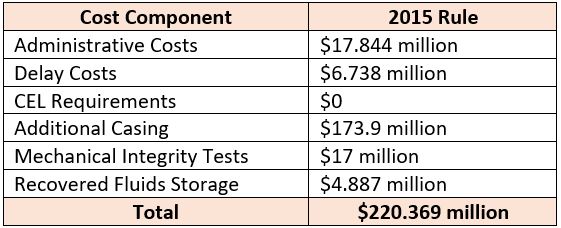Federal Judge Rejects Challenges to ‘Fracking Rule’ Repeal. What Does That Mean?
A federal judge in California recently upheld the Trump administration’s decision to repeal a 2015 rule (commonly known as the ‘Fracking Rule’) regulating hydraulic fracturing on public lands that was challenged by several states, including California, and environmental groups.
Independent Petroleum Association of America President and CEO Barry Russell responded to the decision by U.S. District Judge Haywood Gilliam:
“IPAA launched the initial challenge to the Obama-Era rule with the belief that the law would be on our side and the initial rule would be overturned. Today, we are pleased to come full circle as the Trump rescission rule is upheld and independent producers will not be forced to comply with costly and duplicative rules while operating on federal lands.”
Here are a few clarifications on what Gilliam’s decision means:
Does this mean fracking is not regulated on federal lands?
No, and this is one of the major reasons for both the repeal and Gilliam’s decision. As EID has previously explained, the U.S. Department of Interior repealed the rule in December 2017 “to prevent the unnecessarily burdensome and unjustified administrative requirements and compliance costs of the 2015 rule from encumbering oil and gas development on federal and Indian lands.” In fact, it never actually went into effect, and yet, fracking has continued to be regulated on federal lands. As the court ruling explains:
“In the repeal, BLM explained that because ‘an additional 12 states have introduced laws or regulations addressing hydraulic fracturing,’ the landscape has changed since it implemented the 2015 Rule. 82 Fed. Reg. at 61,925. ‘As a result, all 32 states with federal oil and gas leases currently have laws or regulations that address hydraulic fracturing operations. In addition, some tribes with oil and gas resources have also taken steps to regulate oil and gas operations, including hydraulic fracturing, on their lands.’” (emphasis added)
In other words, giving jurisdiction to the Bureau of Land Management would have placed duplicative regulations on an already highly regulated industry.
Does the Bureau of Land Management or Environmental Protection Agency have the authority to regulate fracking on federal lands?
No. Prior to DOI’s repeal of the ruling, a federal judge in Wyoming had already determined that neither agency has that authority. Judge Scott Skavdahl’s 2016 ruling is clear, stating, “…the Bureau of Land Management lacked Congressional authority to promulgate the regulations.” He continues:
“The constitutional role of this court is to interpret the applicable statutory enactments and determine whether congress has delegated to the Department of Interior legal authority to regulate hydraulic fracturing. It has not.” (emphasis added)
More importantly, Skavdahl explained the unnecessary and duplicative nature of the original rule:
“The Fracking Rule’s focus is on three aspects of oil and gas development – wellbore construction, chemical disclosures, and water management – each of which is subject to comprehensive regulations under existing federal and/or state law.” (emphasis added)
Why would the 2015 rule have been costly?
Not only would the rule have proved duplicative and unnecessary, but it would have added burdensome costs of roughly $345 million per year – something that is especially concerning today. Prior to the repeal, BLM estimated that rescinding the 2015 Fracking Rule would have cost savings ranging from $14 million to $34 million annually.
But IPAA and Western Energy Alliance’s comprehensive impact analysis found those savings would actually exceed $220 million annually. As IPAA and WEA explain:
“By choosing a number of impacted wells within the actual range of completions over the last two years, and almost thirty percent lower than the number of wells that BLM used in its calculations, the associations assert that their cost estimates are conservative and may understate the actual cost savings associated with rescinding the 2015 Rule.” (emphasis added)
The associations break down this cost analysis as follows:

Source: IPAA, WEA comments to BLM, 2017
Conclusion
IPAA’s comments at the time of the 2016 court ruling, that the decision “demonstrates BLM’s efforts are not needed and that states are—and have for over 60 years been—in the best position to safely regulate hydraulic fracturing,” still holds true today. Gilliam’s decision only further confirms this.

No Comments